In a world where information overload is the norm, finding clever digital resources can feel like searching for a needle in a haystack. But fear not! He’s about to unveil a treasure trove of tools that’ll make navigating the digital landscape a breeze. Whether you’re a student drowning in assignments or a professional seeking to boost productivity, these resources are designed to save time and sanity.
Table of Contents
ToggleUnderstanding Digital Resources Clever
Digital resources encompass a broad range of online tools and materials designed to facilitate learning, research, and productivity. These resources include e-books, academic journals, online courses, and collaborative platforms, all accessible through the internet.
Definition of Digital Resources
Digital resources refer to any type of content or tool available online, serving educational or practical purposes. They include multimedia elements such as videos, podcasts, and interactive websites. Comprehensive directories organize these resources, making it easier for users to locate relevant information efficiently. Various types of software also fall under this umbrella, enhancing operations in numerous fields. Effective use of these resources can streamline workflows, making tasks more manageable.
Importance of Clever Utilization
Clever utilization of digital resources significantly enhances both productivity and learning outcomes. Users who maximize these tools often experience increased efficiency in completing tasks. Prioritizing resource selection based on specific needs ensures tailored solutions. Integration of digital resources into daily routines supports information retention and skill development. Users can also benefit from collaborative tools, which facilitate teamwork across distances. Emphasizing adaptive strategies can lead to better time management and reduced stress in both academic and professional settings.
Types of Digital Resources

Digital resources come in various forms, each serving unique purposes in enhancing learning and productivity.
Educational Tools
Educational tools include e-learning platforms, interactive simulations, and online libraries. Users can access a wealth of materials, such as e-books and academic journals, through online repositories. These tools facilitate self-paced learning, allowing students to engage with content at their convenience. Online courses provide structured learning experiences, often featuring assessments and feedback. Platforms like Khan Academy and Coursera exemplify how technology can enhance educational outcomes for learners. Integrating these tools into study routines boosts comprehension and retention, making them essential for effectively navigating academic challenges.
Creative Platforms
Creative platforms encompass graphic design software, video editing tools, and music production programs. Applications like Canva and Adobe Creative Cloud empower users to express ideas visually. These platforms offer templates and collaborative features, streamlining the creation process for both professionals and hobbyists. Publishing platforms, such as SoundCloud or Behance, allow creators to showcase work, engage with audiences, and receive constructive feedback. The right tools can inspire innovation and foster creativity, proving invaluable for those pursuing artistic or entrepreneurial endeavors. Leveraging these resources enables individuals to elevate their projects and make a lasting impression.
Strategies for Effective Use
Effective strategies maximize the benefits of digital resources. Users can navigate this digital landscape more efficiently with the right approaches.
Integration in Daily Learning
Incorporating digital resources into daily learning routines enhances the educational experience. Users may start each day by setting specific learning goals and selecting relevant e-books or online courses. Utilizing platforms like Khan Academy or Coursera provides structured content that aligns with those goals. Engaging with multimedia elements can reinforce concepts and improve retention. Daily use of collaborative tools fosters interaction with peers and encourages knowledge sharing. Real-time feedback from online forums or study groups can clarify doubts, enabling students to grasp challenging concepts better. Prioritizing the integration of diverse resources streamlines learning and makes complex subjects manageable.
Enhancing Creativity and Innovation
Creative expression flourishes through innovative digital resources. Tools like graphic design software and video editing applications enable users to bring their ideas to life. Emphasizing the importance of experimentation, individuals can explore various styles and techniques without fear of failure. Utilizing platforms like Canva or Adobe Spark allows users to create professional-grade content effortlessly. Sharing creative work fosters community feedback, further inspiring improvement and refining skills. Engaging with tutorial videos or online workshops enhances knowledge, empowering users to push boundaries. Prioritizing creativity through these resources leads to unique projects that leave a lasting impact.
Challenges and Solutions
Users frequently face significant challenges when navigating the digital landscape filled with resources. These obstacles can hinder effective use and limit overall productivity.
Common Obstacles
Information overload presents a major hurdle in effective resource utilization. Users struggle to sift through countless content options, making it difficult to identify the most relevant materials. Additionally, lack of digital literacy often hampers the ability to leverage advanced tools. Some individuals may feel overwhelmed when attempting to engage with unfamiliar platforms, leading to frustration. Time constraints further complicate the situation, as busy students and professionals may lack the bandwidth to explore resources thoroughly. Disorganization can also impede access to valuable information. Without a structured approach, finding the right tools becomes a daunting task.
Overcoming Barriers to Access
To tackle these barriers, individuals can adopt targeted strategies. Prioritizing resource selection based on specific needs simplifies the process. Utilizing bookmarks and organized folders helps users manage and access materials efficiently. Structured learning paths on platforms, like Khan Academy or Coursera, provide a focused framework for users seeking guidance. Encouraging collaboration within study groups or professional networks promotes shared learning experiences. Additionally, exploring tutorials and online forums can enhance digital skills, empowering users to navigate tools confidently. By implementing these solutions, individuals can transform their approach to digital resources and unlock their full potential.
Embracing digital resources can transform the way individuals approach learning and productivity. By understanding the diverse tools available and how to leverage them effectively, users can navigate the complexities of the digital landscape with ease. Prioritizing specific needs and incorporating structured content into daily routines allows for a more organized and stress-free experience.
Moreover, fostering creativity through innovative platforms can lead to unique expressions and impactful projects. As individuals become more adept at utilizing these resources, they not only enhance their skills but also unlock new opportunities for growth. Ultimately, a thoughtful approach to digital resources empowers users to thrive academically and professionally, paving the way for a more productive future.


